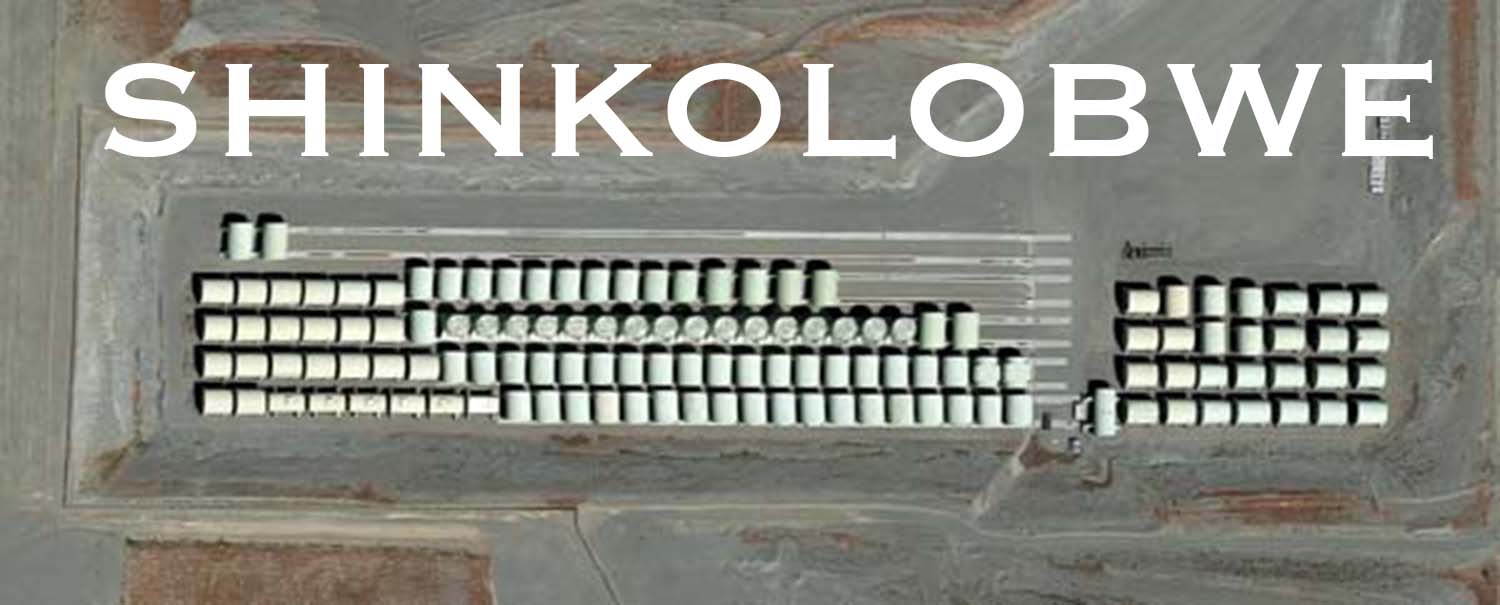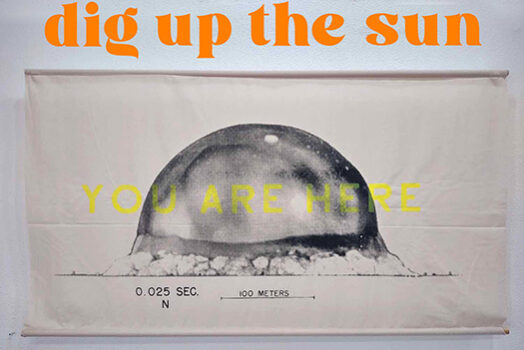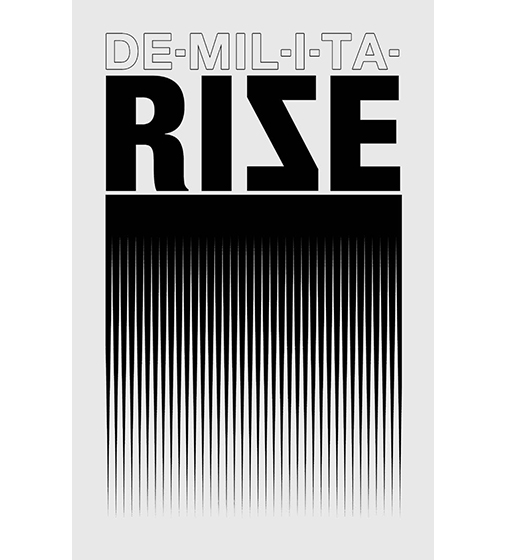This is the second in a series of posts about a visit to the Hanford Nuclear Reservation in Eastern Washington state, and the fate of the uranium ores found in the Shinkolobwe mine of Katanga Province, DR Congo. Read the first post here, and stay tuned for upcoming installments! This section covers a tour of the heart of the Hanford Reservation, and the massive and ongoing cleanup efforts there.
We rolled out of the tent the following morning to the campground deserted again, and packed up our site in the early light, eating oatmeal and drinking coffee. The tents were all empty, flaps shifting in a light wind as we drove off back to Richland for the cleanup tour.
This tour started in a crisp and shining new structure in a new corporate park just to the west of the B Reactor tour HQ. We had to show ID that somehow demonstrated our US citizenship, and received lanyards to wear and a packet of plasticized sheets describing the sites we’d visit. Where the crowd from the B reactor tour had been pretty diverse in age range, this group of 11 was much older- no-one under 36, and most in their fifties or higher. Most were local, and many were former or recent employees of Hanford or the cleanup project.

A functionary or two introduced themselves and gave some brief introduction to the current state of the Hanford cleanup project, listing the seven contractors doing the work for the Department of Energy’s Office of River Protection, which manages the site at a federal level. These entities had names like Sage 2FL Hanford and the Mission Support Alliance- the latter of which was running our tour.
We trooped out to the bus and headed into the network of facilities that form a sort of gateway to the larger Hanford site. We passed the works of a company called Framatome which manufactures commercial nuclear fuel, and pulled into a lot with a couple of modal trailers and a big white tank.
Inside the trailer a man in khakis with government hair described his organization’s work to remediate the waste in the many underground storage facilities scattered across the center of the site. These sites are composed of batteries of underground storage tanks, and are referred to for some incomprehensible reason as tank farms. These are where all of the liquid waste generated during the decades of plutonium production ended up, and are one of the main sources of contamination- as a lot of the tanks are old and have either just started to leak or have been leaking for years. The presenter described the layout of the 177 tanks currently being dealt with, all buried under 7-10 feet of soil and accessible only through the narrow 12-inch cylindrical riser that protrudes through the top of each tank. “We have to use sort of robotic arms to get down into the tank because of the radiation, and we have to equip those arms with different tools to deal with the stuff at the bottom which is either liquid waste, salt cake, or sludge. Some of it is hard as concrete, some of it is more like peanut butter. We pump the liquid waste from one tank into another to sluice out the sludge. We have to repeatedly lower cameras into the tanks to check progress, and these usually last an hour or so before they’re totally incapacitated by the radiation.”
After all of the waste is sluiced and chipped free from the tanks, he said, it’s pumped through a network of pipes to a storage site. “What happens to the tanks themselves?” came the question.
“Well we currently don’t have a specific plan to remove them, so they will probably be filled with grout and capped. The tribes that are stakeholders in the project want everything removed but that doesn’t look possible at this point.”
This was the first mention on the tour of the critical utility that is being used for much of the waste disposal and treatment: grout. Grout is a thin cement that is sprayed into cavities to fill them and onto objects to entomb them. It is the baseline solution to almost every single problem in the Hanford landscape that isn’t otherwise being treated by more complex engineering and technical methods.
This was also the first mention of the demands for a full and complete cleanup and restoration of the site by the numerous native nations with historical relationship to this land, and the first basic dismissal of those demands.
We got back on the bus and headed north, pausing for a small detour past the 324 building. This unassuming and drab structure had been the site of an experimental “vit” or vitrification facility in a chamber called the B Cell, where processes to transform Hanford’s volatile high-level waste into more eternally stable forms were being developed in the previous decades. As the B Cell was being dismantled, however, the ground underneath it revealed a massive plume of radioactive contamination measuring in spots at up to 12000 rads. One of the older men in the back with long grey hair covered with a bandana asked what was the current plan for the site and the docent replied, with what was to become a well-worn shrug and chuckle, that it was likely that cleanup crews would simply grout the entire facility and entomb the contaminated site whole. “Will it be clean then?” came the rejoinder. Another shrug, another vague chuckle. “It will meet the regulatory standards.”
This location is about 500 meters from the Columbia river, it should be noted.
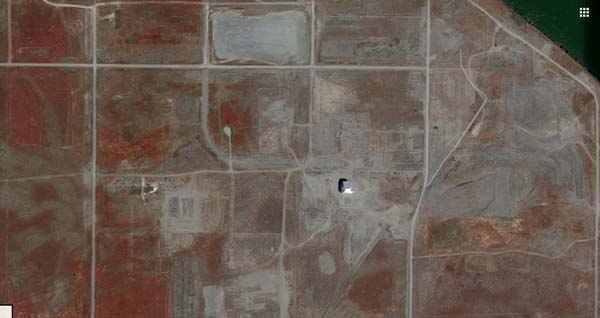
The bus turned onto the main east Hanford highway going north, and passed through a locked gate with an armed guard who emerged from a smoked glass booth to scan us briefly through his Oakleys. Now we were in Hanford proper, the forbidden interior zone. We sped through the harsh and ashy landscape of an early summer burn, where some careless spark had torched the quick-drying and invasive cheatgrass that makes up most of the desert foliage, and dry winds had swept the ensuing flames into the sagebrush stands, leaving complex radial arrays of charred sticks pointing haphazardly into middle distance.
Cheatgrass is a recent arrival in the west, a hardy annual grass native to Europe, Asia, and North Africa introduced to North America in the late 19th century. It has disrupted ecological communities across the continent but none so dramatically as the sagebrush steppe of the intermountain west. The name comes from its tendency to green up early and then die, making poor fodder for animals. It spreads rapidly across disturbed soils, and followed colonist footsteps into the dry lands east of the Mississippi, slowly replacing its neighbors as it went. Its early drying and dense growth make it prone to fires hot enough to eradicate other plants, and its prodigious seed-growth make it first off the mark to reeestablish in burned soils. The territory we were crossing was just the newest zone of colonization- the sagebrush wouldn’t come back next year and by early June this expanse would just be a monoculture of foot-high drooping rust-colored bromes, waving in whatever breeze came down the river.
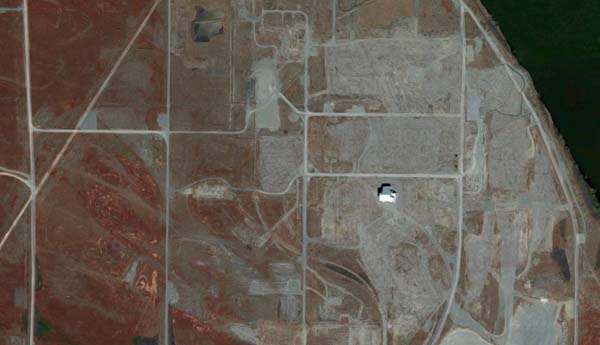
The landscape unspooled before us, broad and open and vague. The hulk of a decomissioned reactor passed on the right, silhouetted against the basalt of the Columbia banks. 9 Reactors were built here in an arc following the curve of the river- the B, C, KE, KW, N, D, DR, H and F. Most of these followed the same basic pattern as the B reactor, with the exeption of the N reactor, completed in 1963 and dedicated by JFK just four months before he was assassinated. The N reactor was a novel design and produced power in addition to plutonium. Its structure was similar to the similar to the Chernobyl reactor, and it ran the longest out of all of the Hanford reactors. It was the last to be shuttered, in 1987, and left behind 2300 tons of unprocessed enriched fuel which is now stored in containment pits at the K reactor sites.
We followed the curve of the river, the docents pointing out the remote shells of the towns evacuated when the site was condemned for takeover by the Manhattan project. The reactors were squat abstract slugs against the taupe of cheatgrass and the sporadic sage. Save for the museumized B reactor they have all been “cocooned” as the parlance terms it, walled in under cement shrouds and subject to a regimen of rigorous inspection every five years to ensure nothing is getting in or out. All the surrounding outbuildings and support facilities have been demolished, lending the remaining cores a truly desolate aspect, the progeny of something enormous and angular, whose insides have liquefied and are being sorted into a novel form by mysterious genetic processes of realignment. Nothing, however, is going to burst forth from these hulks and inflate itself against the pink sky of dusk. Nothing real. That still leaves plenty to imagine.
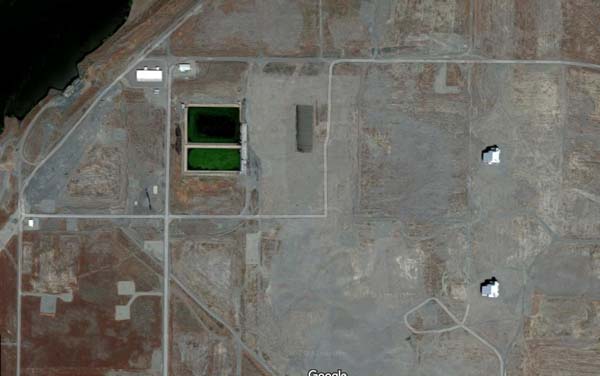
The road followed the curve of the river and brought us within sight of the B reactor, this time from the east. Before we arrived there, however, we turned south, into the core industrial area of the reservation. We rode past the pleasantly understated geology of Gable mountain into the 200 area, passing the T-plant, where the fuel enriched in the Hanford reactors was processed, and pulled into the lot at the 200 West Pump and Treat facility, where we were ushered off the bus into an unremarkable building full of tanks. Pipes and tubes of assorted colors and levels of wear uncoiled from the building into the surrounding landscape, vanishing between low piles of duff and dirt. Inside the building we circled up in an antechamber to hear the docent hold forth on the work underway to mitigate one of the most persistent contamination hazards at Hanford- underground plumes of chemicals like Hexavalent Chromium, which contaminate the soil as a byproduct of the process of dissolution that the enriched uranium fuel rods went through before their eventual processing into plutonium. Between 1943 and 1997 more than 450 billion gallons of contaminated water were discharged directly to the ground. The aquifer that underlies the Hanford site is contaminated by these chemicals at numerous sites, and is flowing at a slow geological rate southeast across the reservation towards the Columbia River. The role of the Pump and Treat facility is to basically extract the aquifer, pass it through a series of complex biodigesters where specialized microorganisms perform an act of decontaminatory magic on it, treat it by numerous other and further means, and then re-inject it into the subsoil to continue its flow.

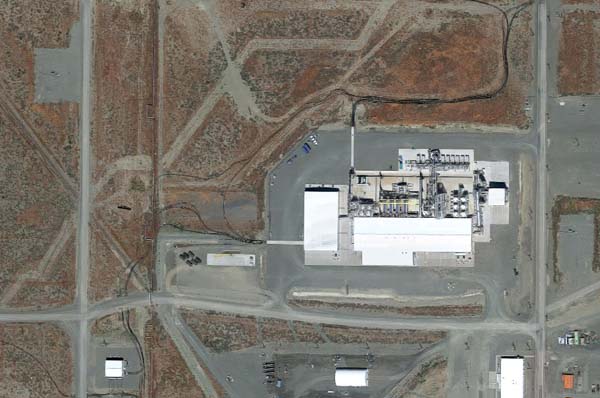
Back on the bus we wound slowly through the 200 area. We passed the weird blue-tinged buildings of the Plutonium Finishing Plant, a complex of half-demolished concrete slab structures where the final processing of solid plutonium out of the liquid solution occurred, fashioning the solid fuel into the “buttons” that were shipped offsite for manufacture into warheads. We rolled past the Environmental Restoration Disposal Facility, a series of vast pits dug into the plateau where assorted waste matter is being prepared for interment, repeatedly pounded and compacted into the ground and covered with layers of soil which receive more waste and are pounded into the earth again. Waste comes here from across the Hanford site, and it has also started receiving material that had been destined for the shuttered Yucca Mountain facility. In a political environment where many locations have refused the long term storage of high-level waste, the ERDF has become a dumping ground of last resort.
We spiraled inward, past reaches of temporary structures, a milling crowd in front of a taco truck labeled Don Taco, and the docent pointed out a small unassuming building which he said was the site of storage for cesium capsules that had been manufactured for commercial use. In the absence of sufficient customers the capsules had been relegated to a deep water-filled pit where the Chernkopf effect produced by their radioactivity caused gamma rays to ionize the surrounding water in the storage tanks so that it glowed the hellish blue of a skeletal prestige-TV zombie. “Not a great situation” said the docent.
Turning right and ascending a low rise we passed a long, shallow depression full of massive dun cylinders. This, said the docent, is where we keep the submarine reactors.
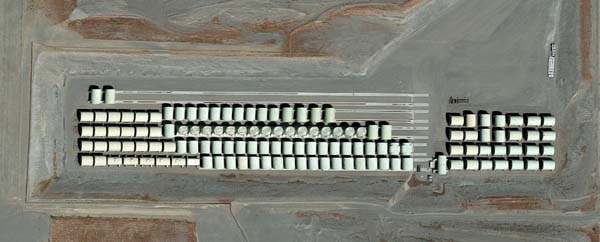
I looked out over the pit as we scooted past it. There were hundreds of the cylinders, standing twelve to fifteen feet high, each one a section sliced from the center of a nuclear submarine and containing the decommissioned reactor that powered it. These sections were braced, welded shut, painted a lichenous green, and shipped upriver to Hanford from Portland on barges. They receded into the middle distance, echoing, beads on an abacus, each one holding just as much darkness as the others.
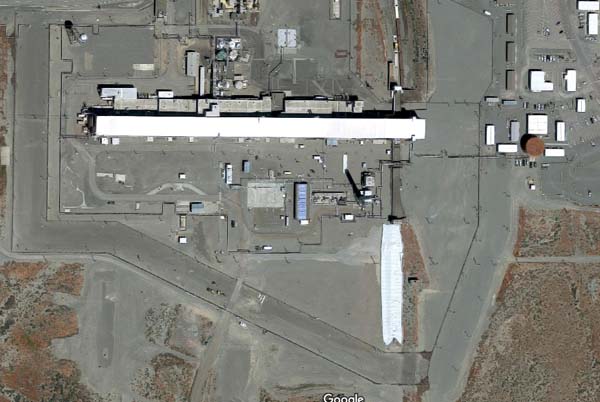
At the top of the rise was the PUREX plant, another site of extraction of solid fuel, but this one perhaps the most massive- it processed over 70,000 tons of enriched uranium during its 30 years of operation. Next to the building are a series of tunnels which were opportunistically used to bury the highly-contaminated railcars that shuttled fuel products around the reservation for decades. The docent said that the plan had been to eventually remove and dispose of the cars, but after a collapse of part of the tunnel in 2017 that caused a partial evacuation of the entire site, the planners had been considering just stuffing all of the railcars into the depths of the tunnel and filling the totality of the chamber with grout.
The center of the 200 area is the construction site for the Vitrification Plant. Two huge buildings loom next to each other, overtopped by a series of massive cranes. The docent pointed out models of the steel-covered canisters that would hold its products- basically everything radioactive removed from the tanks and storage basins and combined with sand at high temperatures to create stable and solid cylinders which would endure centuries of stasis in permanent storage facilities while their radioactivity dissipated and the half-lives of their assorted contaminants divided ceaselessly towards zero, a point arriving perhaps some ten thousand years from now. The cranes were idle, the site empty. Vinyl signage flapped loose where it had ripped from its grommets. Construction had been paused, said the docent, due to some rather serious seismic issues that had come to light during the construction process.
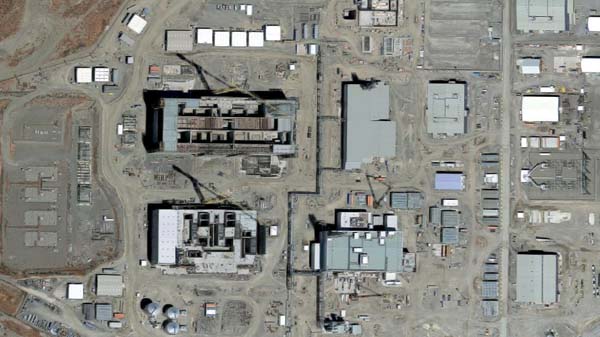
The whole drive back to Richland was through a burned landscape. On the right side the black pencils of sagebrush and rabbitbrush clicked in an afternoon wind, while on the left the cheatgrass nodded, waving us on.
We waved goodbye to the group and crossed the parking lot, got in the car and drove through the sprawl of low offices until we found a barbecue joint. We ate. As we were getting up to go we ran into the man with the mustache, the former employee, eating with his brother-in-law at the white metal tables that edged the street. We joked a bit about the tour and the docents. He stroked his mustache and said “I know that what they did there was necessary and all to finish the war, but what they did after that wasn’t. They kept on making that fuel for the next thirty years because people were making money, and they got into the habit of making money and nobody wanted to see it stopped until it had gone way too far. There’s so much plutonium. So much. And nobody really has a good idea of what to do with it, especially now that they’ve broken down so many of the missiles.”
Biting our tongues we wished them good appetite and got back on the highway, headed back to Portland through the amber and dusty light of high summer on the Columbia Plateau.
The next installment will talk about the history of the uranium that was processed into plutonium at Hanford, the geopolitical wrangling that went with it, and the legacy that those ores left behind- including the source of the original idea for the Kingdom of Wakanda.
